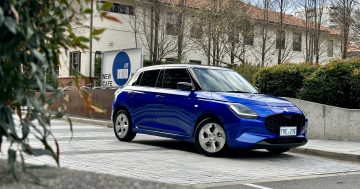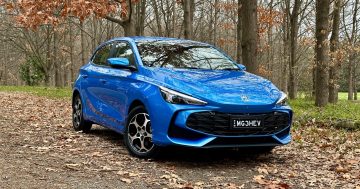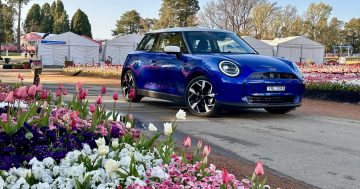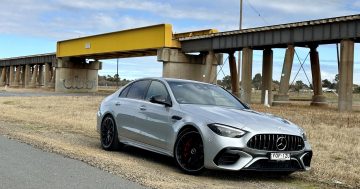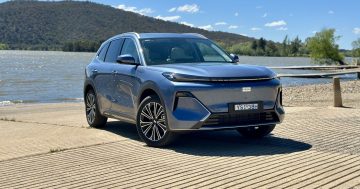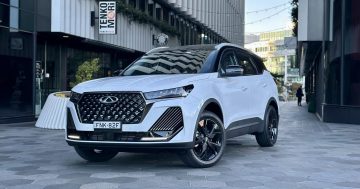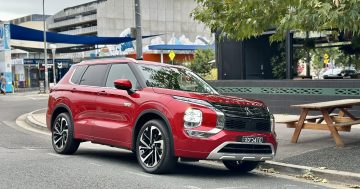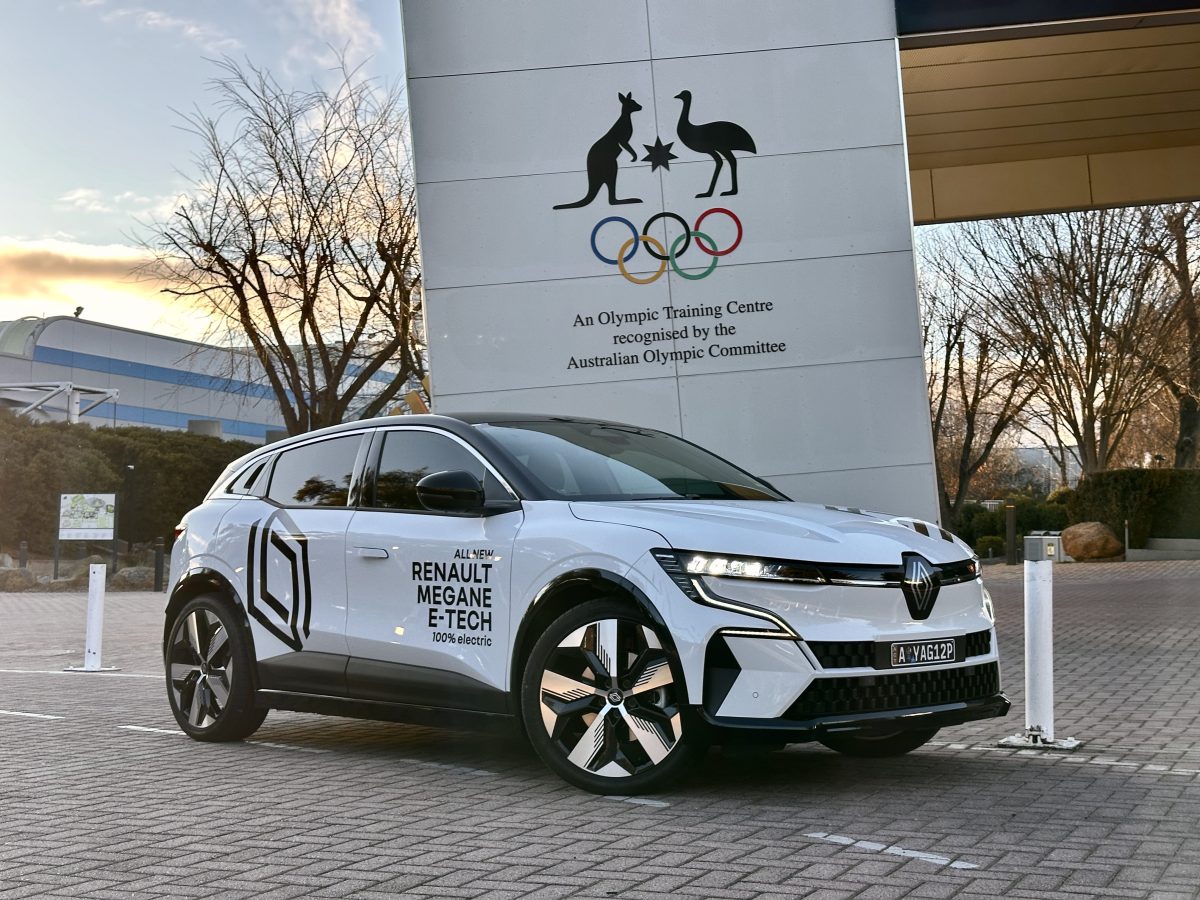
The Renault Megane has returned, bigger and more electric. Photo: James Coleman.
We’re told to maintain a distance of no fewer than three seconds from the car in front to avoid ploughing into them if they brake suddenly.
The puzzling thing is, every modern car has the tech to tell you this – what with radar systems for the adaptive cruise control and windscreen-mounted cameras for everything else.
But up until now, no car ever has. We’ve all had to count out the seconds in our head.
In the new Renault Megane E-Tech, however, a graphic on the screen directly in front of the driver will flash red to show you how naughty you are if you get within one second of the car in front, yellow if it’s between 1 and 1.8 seconds, and green for between 1.8 and 2.2 seconds.
The Olympic opening ceremony might have had you thinking the French were all out of good ideas, but this is here to say they’re not.
And it’s just the first of many I found in the new … whatever this car is.
Forget everything you know about the Megane.
The name has been represented by all sorts of body styles since Renault first came up with it in the late 1990s – most famously, a three or five-door hatchback, but also a sedan, wagon, coupe, and even a convertible for monsieur.
But none of them have ever been the “fully electric crossover” we have today.
I suspect I know what happened. The engineers went to recreate the hatchback but discovered the slab of batteries didn’t fit underneath.
This now also means the Megane is playing in the same space as other EVs like the Tesla Model 3, Hyundai IONIQ 5 and Volvo EX30. And costing about the same. In its single spec of ‘EV60’, it starts from $54,990.
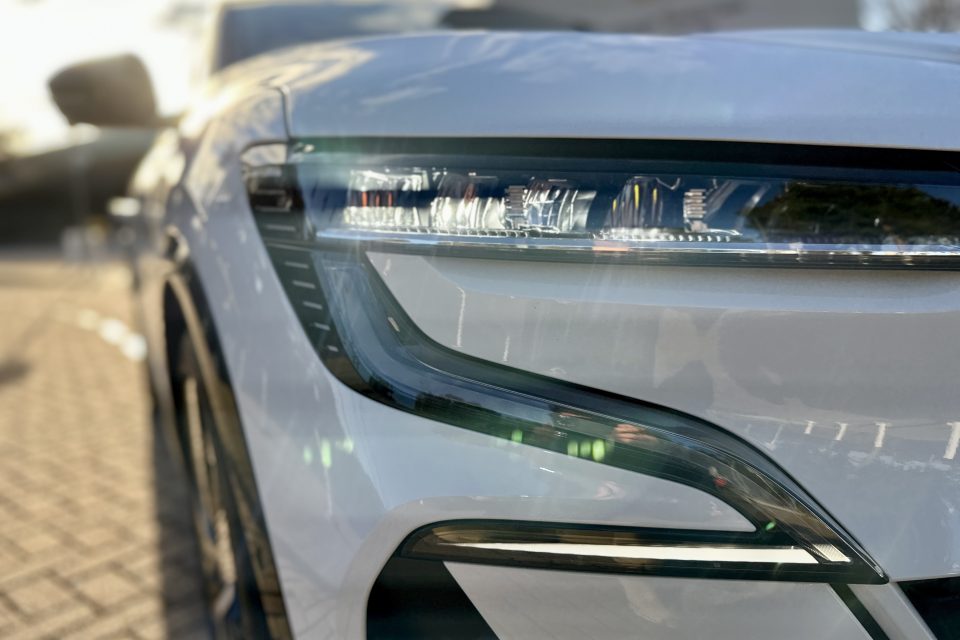
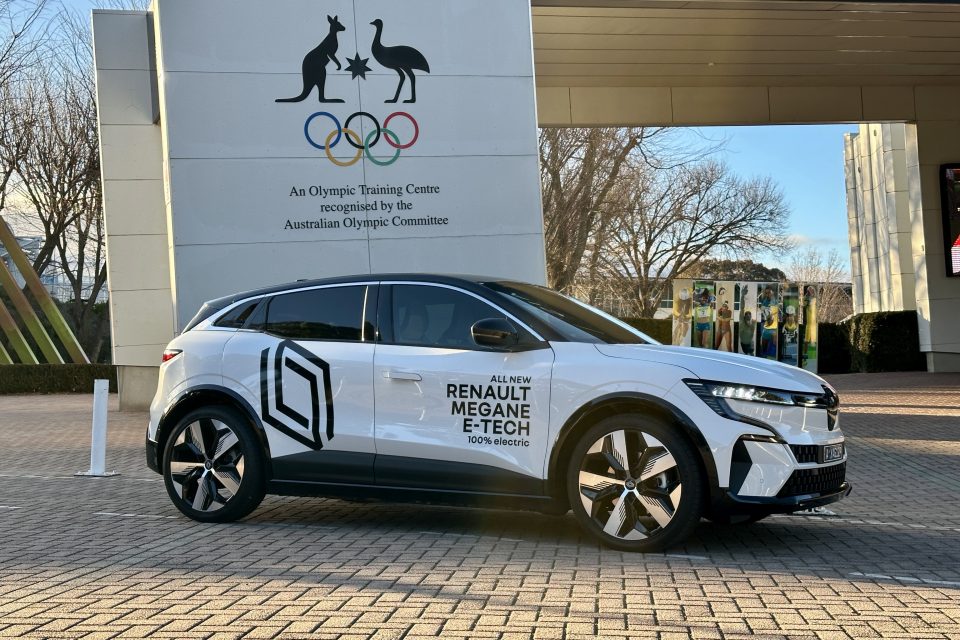
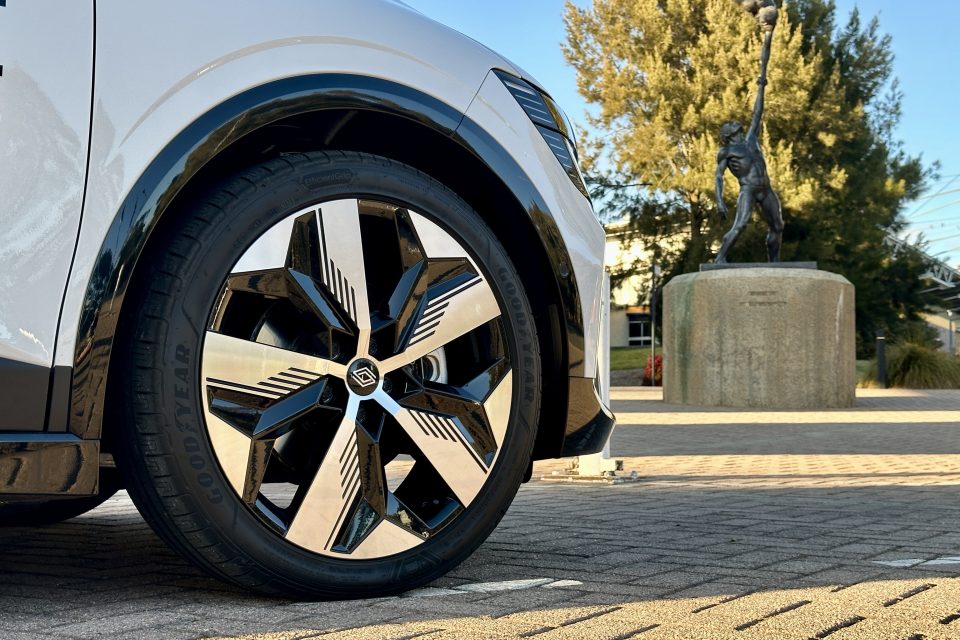
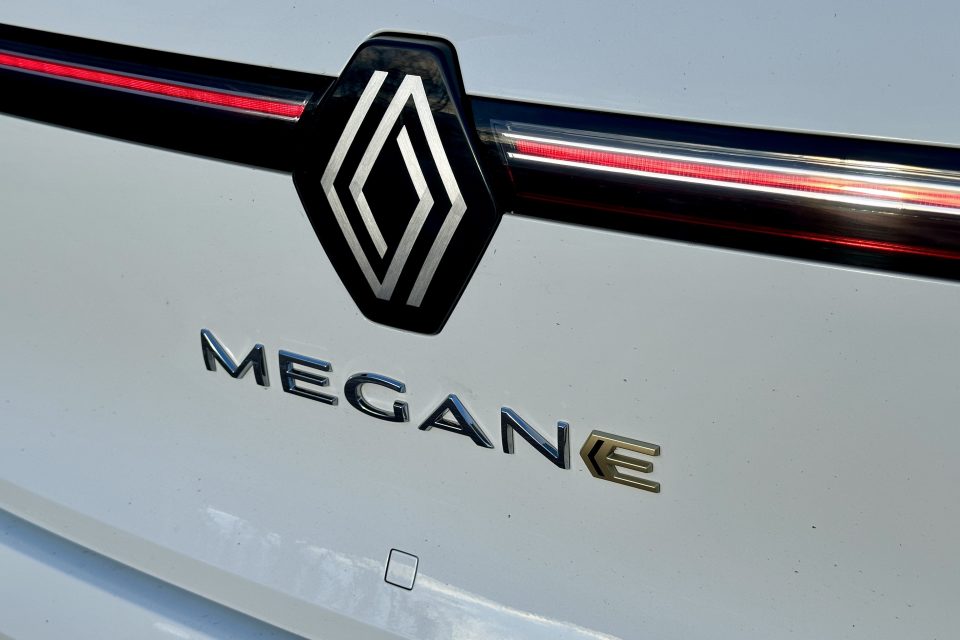
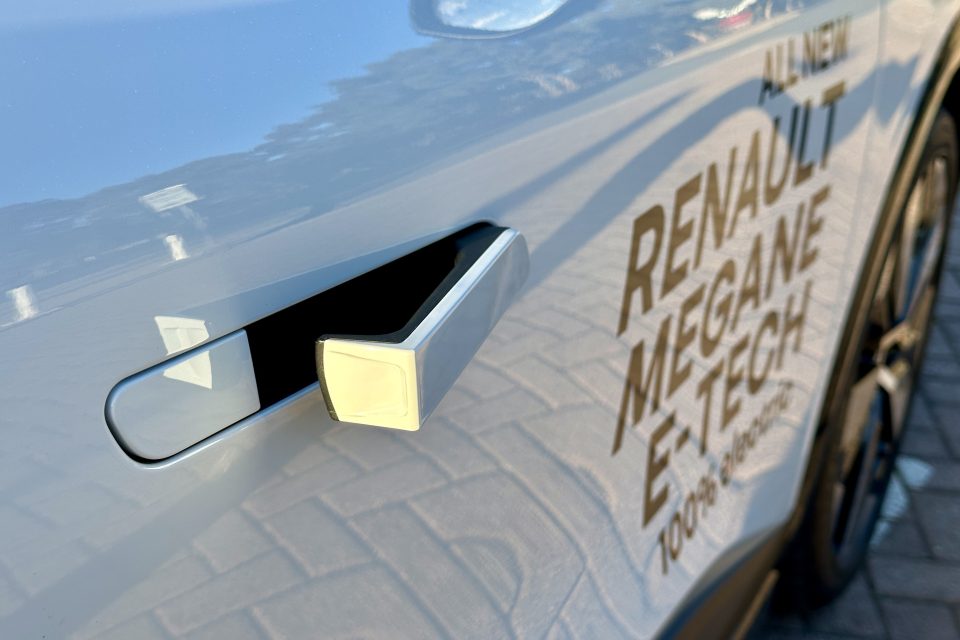
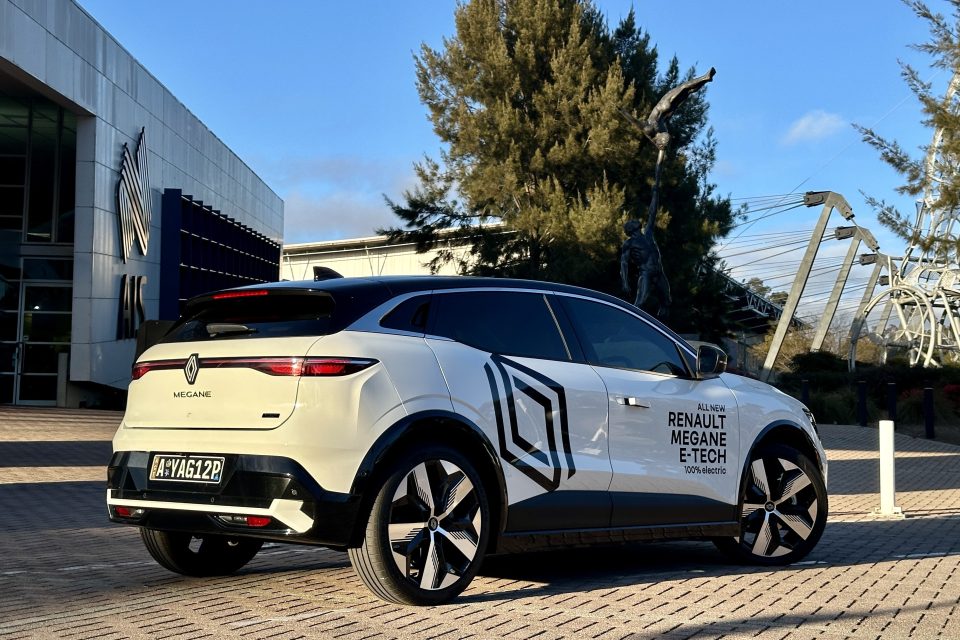
But unlike when they decided to reinvent Da Vinci’s Last Supper, the French did their homework this time.
Renault has made sure that nearly everything you touch and feel inside – up to 28 kg worth, in fact – is recycled. The body is crafted from aluminium, and any offcuts are remodelled and reshaped for use in other vehicles for “absolutely zero waste”. Up to 90 per cent of the car is recyclable, and the brand plans to start recycling used batteries in a new factory from next year.
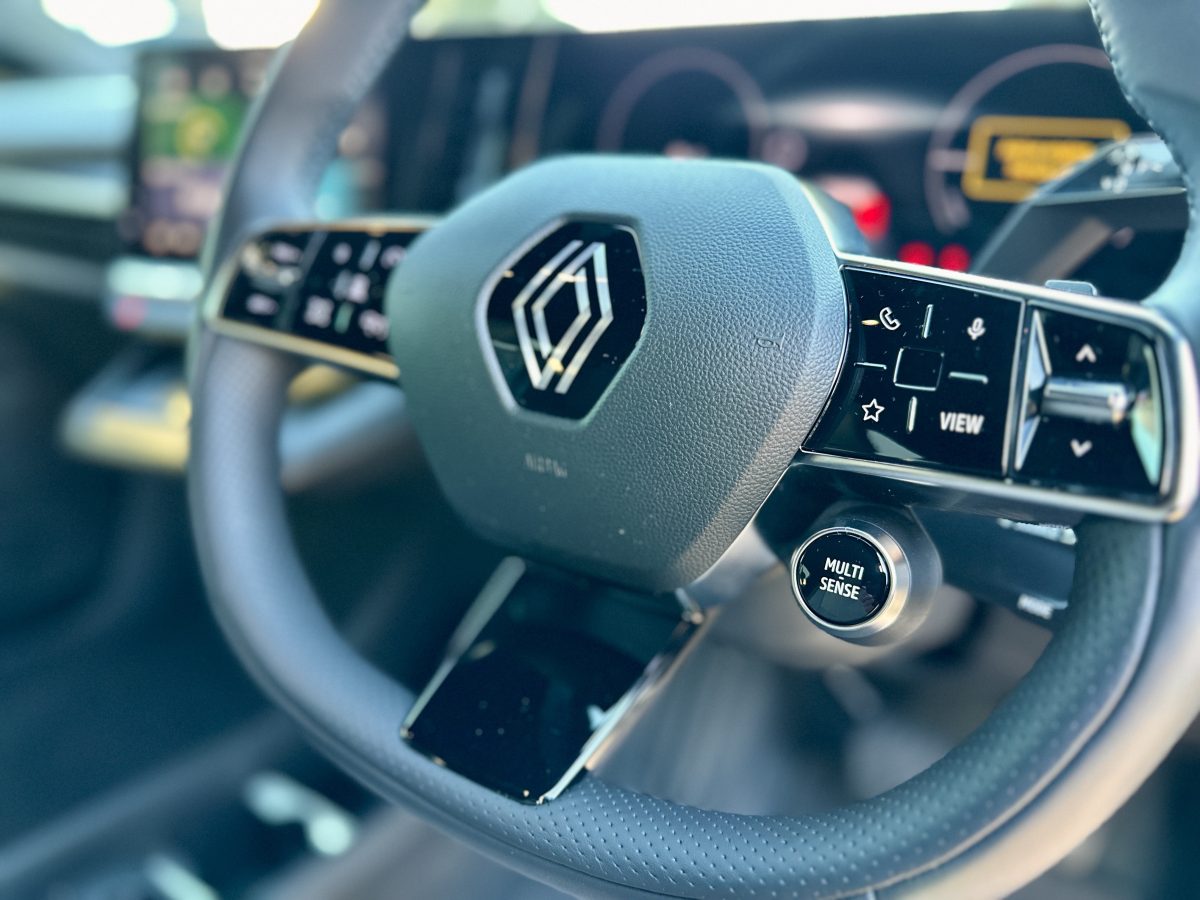
The ‘multi-sense’ button accesses the different drive modes. Photo: James Coleman.
Renault has even thought of buyers with niggling fears of ending up in a lithium-ion inferno and, together with French firefighters, worked on a way to bring the three hours it normally takes to extinguish an EV fire down to as little as five minutes.
“A metal rupture disk seals the battery throughout its life to ensure watertightness in everyday use,” the Australian website reads.
“However, if a fire starts, it breaks under the force of a high-pressure jet of water directed by firefighters, allowing water to reach the battery directly.”
The car itself looks far from as ungainly as it should, with thin lights and windows, high haunches and large wheels that combine to give it quite the aggressive presence. Like a bulldog. A French bulldog, if you will.
The downside is you’ll see more from inside a post box than you will out the back window. But Renault realised this too, which is why if you flick the lever on the bottom of the rear-view mirror, the view switches to a rear-mounted camera.
The little thoughtful touches continue.
The main touchscreen, as well as the line of physical buttons underneath it, is angled towards the driver for easy reaching.
The wireless phone charging tray jutting out from underneath it might look a bit unsightly, but it’s also perfect for holding your phone upright. At least until you put your foot down and the phone goes flying.
During a work lunch run, we also discovered the storage cubby between the seats can snugly hold a foot-long sub. Top marks there.
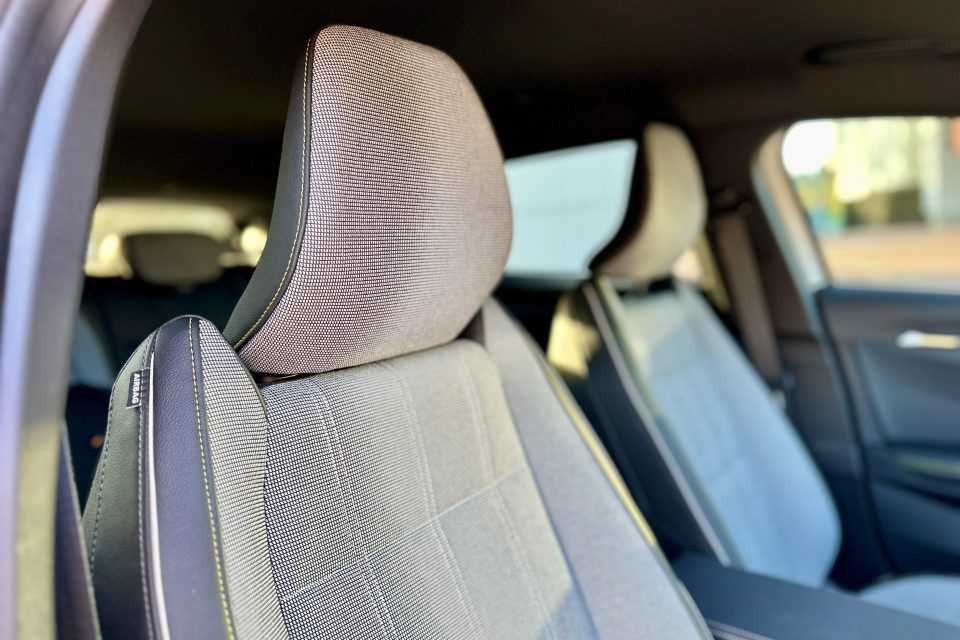

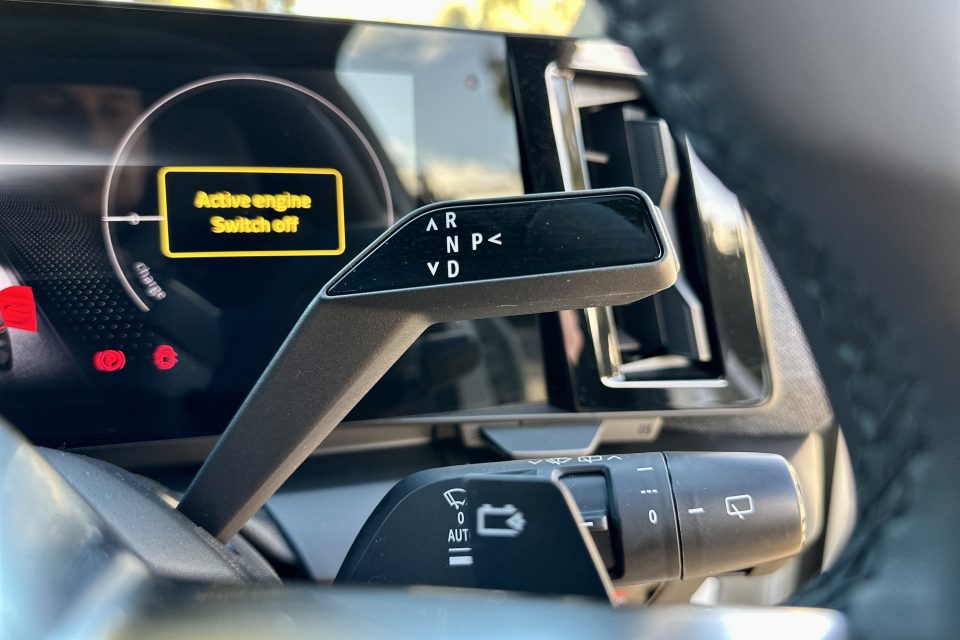
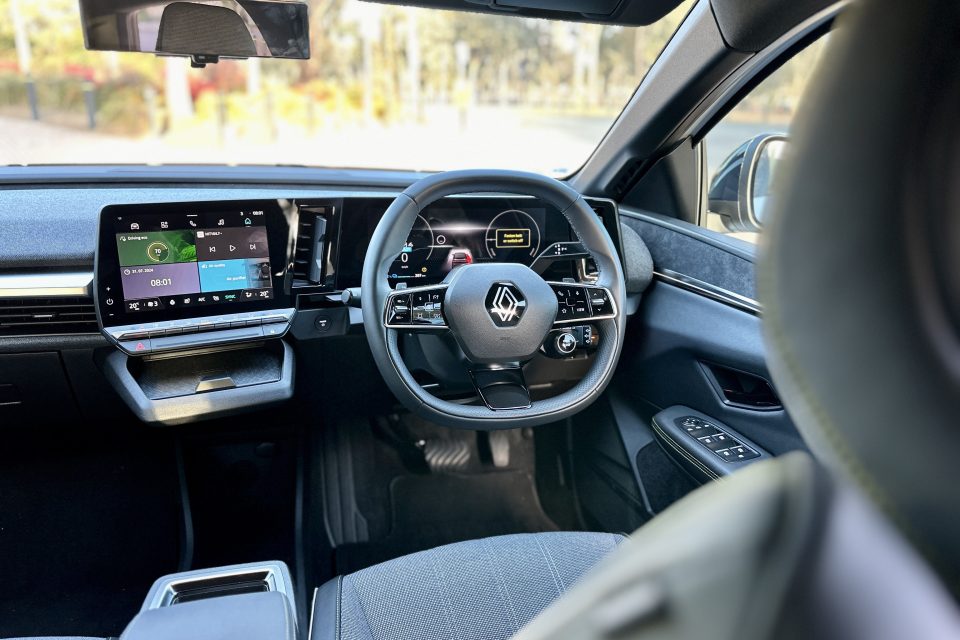
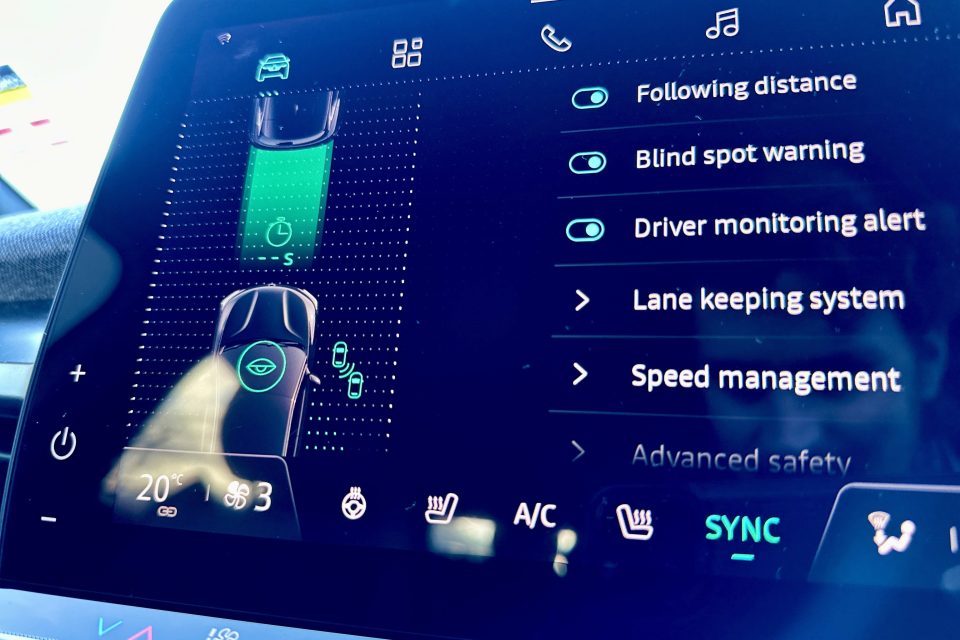
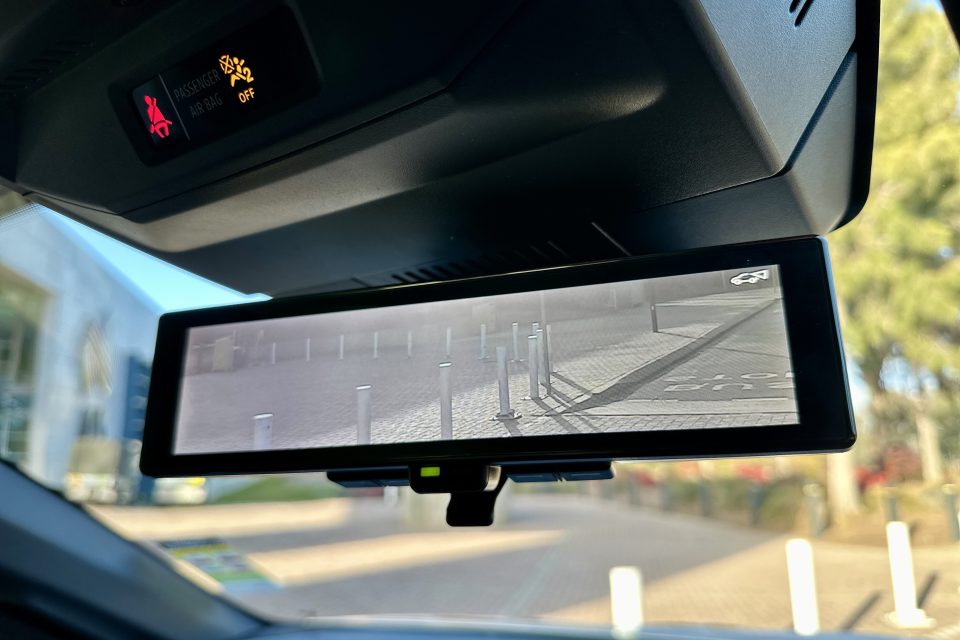
The Megane isn’t as violent to drive as many EVs, either. Renault claims a lazy 0-100 km/h time of 7.4 seconds, but there’s still enough instant torque to have you searching the footwell for the phone that was fired from the charging tray a few traffic lights ago.
It’s about 100 kg lighter than the Tesla Model 3, with a kerb weight of 1642 kg, and far plusher in the suspension department, too.
But now to the tour de force. In the corner of the windscreen is a rooster sticker, a nod to France’s national animal. Tell me that doesn’t make you inwardly happy.
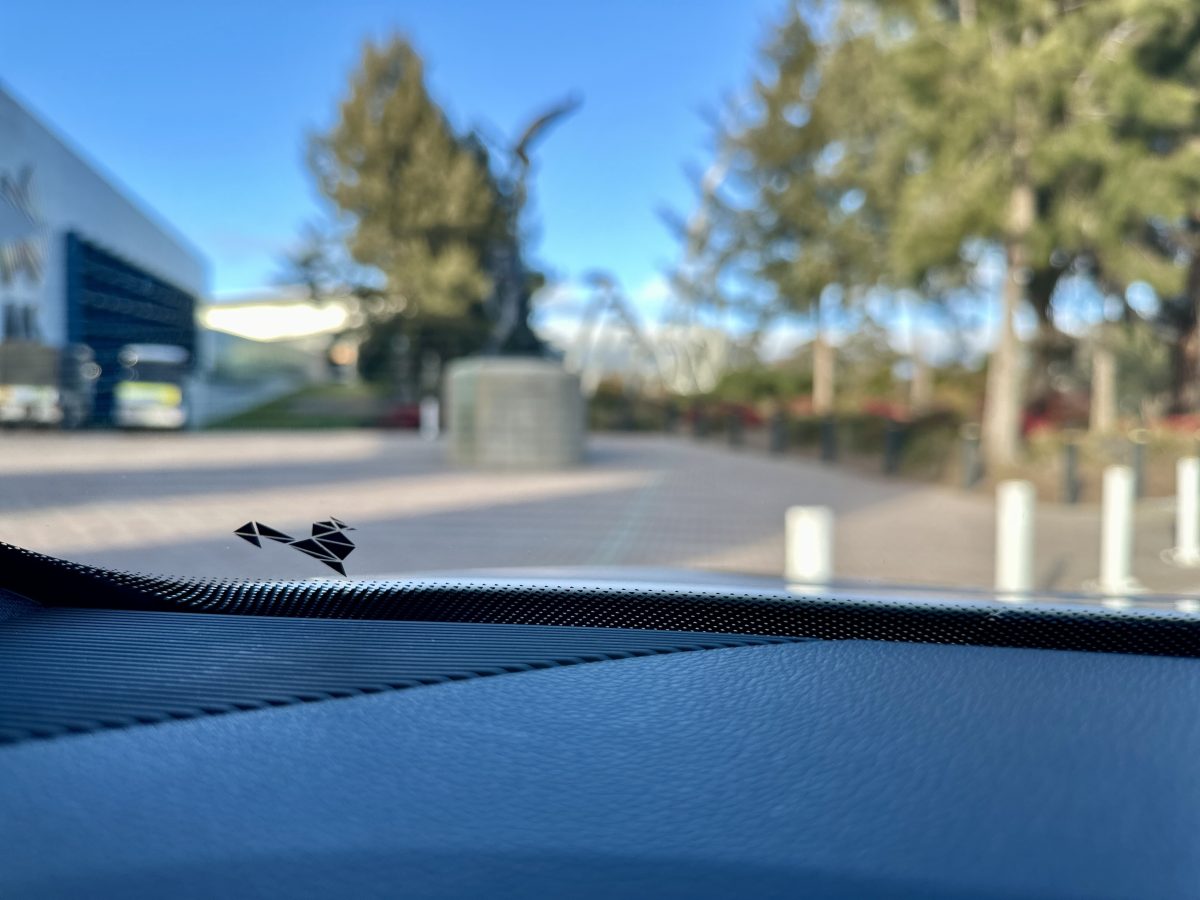
Spot the chicken. Photo: James Coleman.
The reincarnated Megane is not perfect.
Renault claims 454 km of range, and maybe it’s just the Canberra winter, but I was only offered 250 km from an 80 per cent charge. So it’s pretty much tied to around-town duties.
You have to adjust the front seats manually, and during another work lunch run, I ended up in the back seats where there’s no room between the front seats and the floor to even slide your toes under. It’s cramped. Except for the boot – that’s massive.
But it was hard not to be impressed. And that’s something nobody’s said this week about the French.
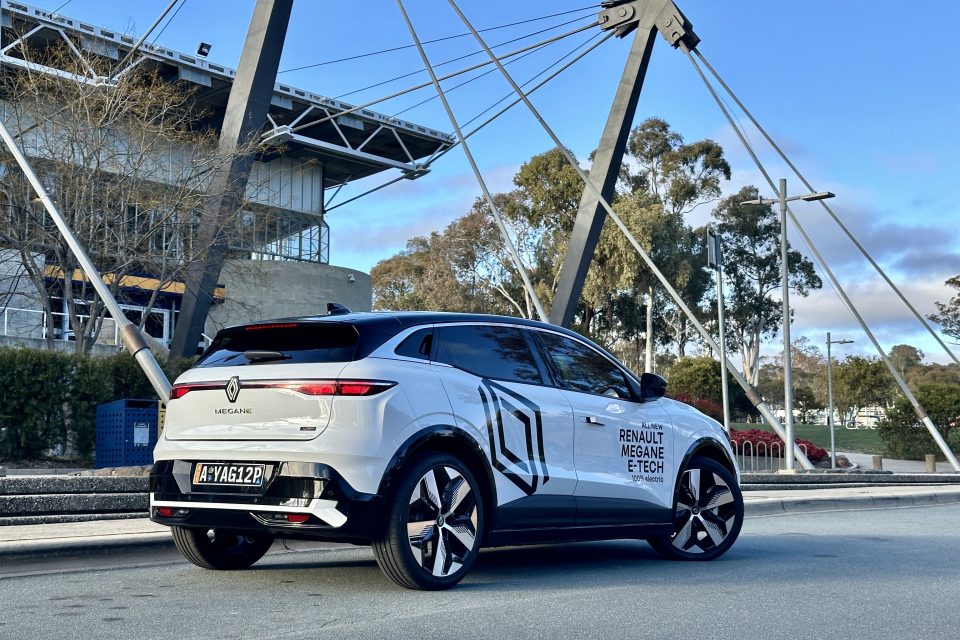
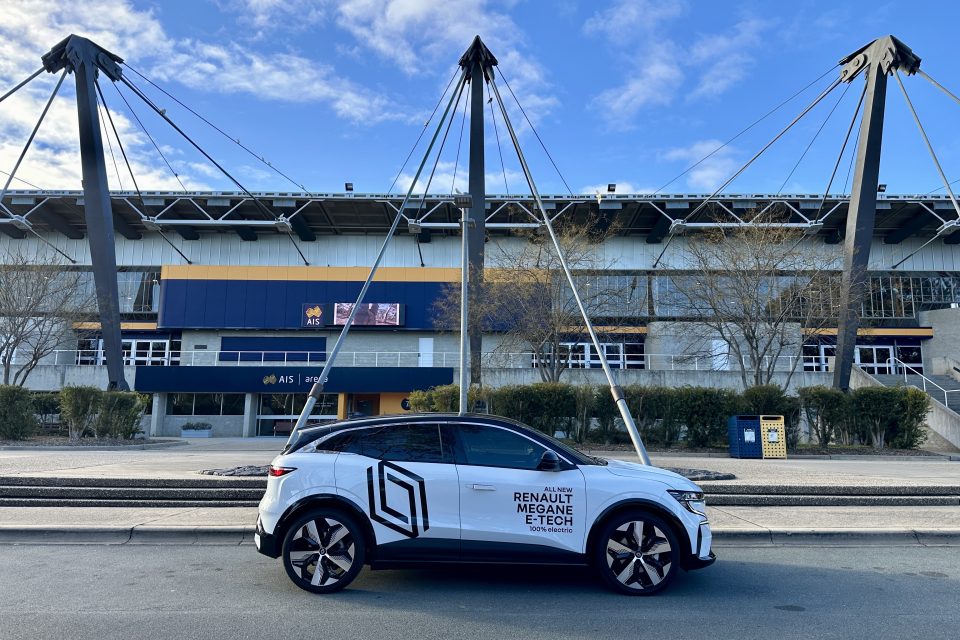
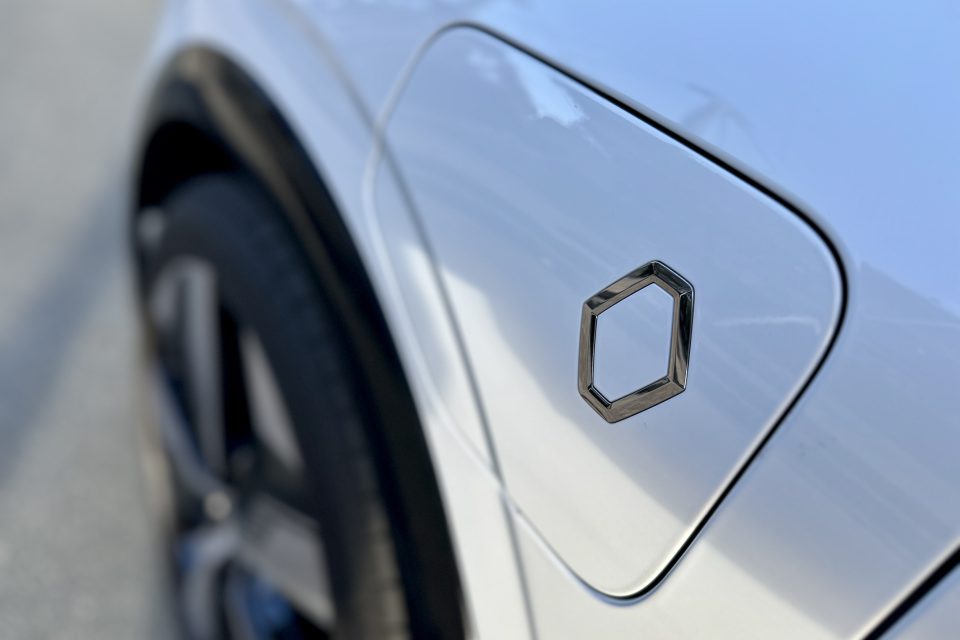
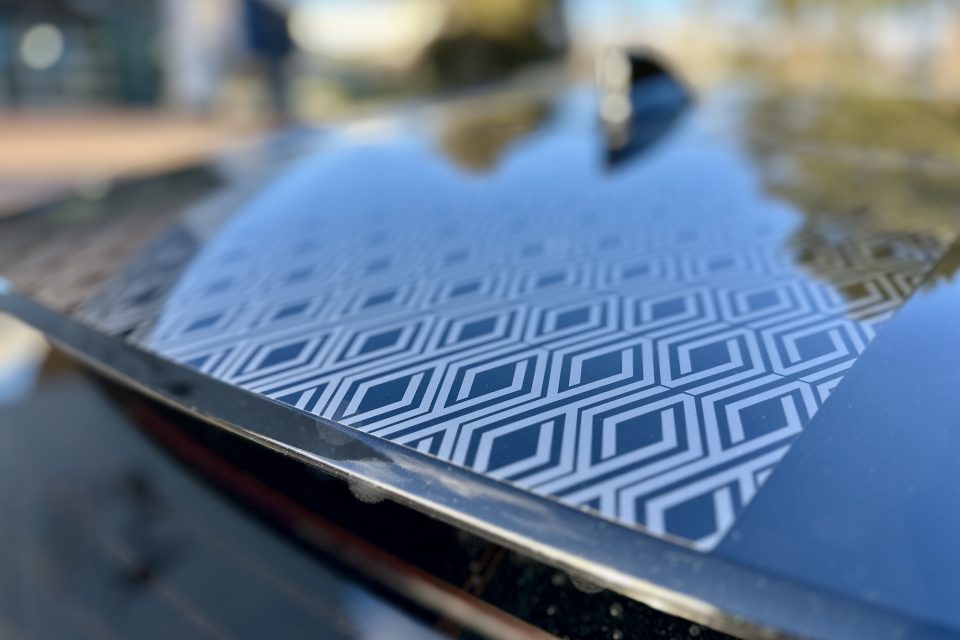

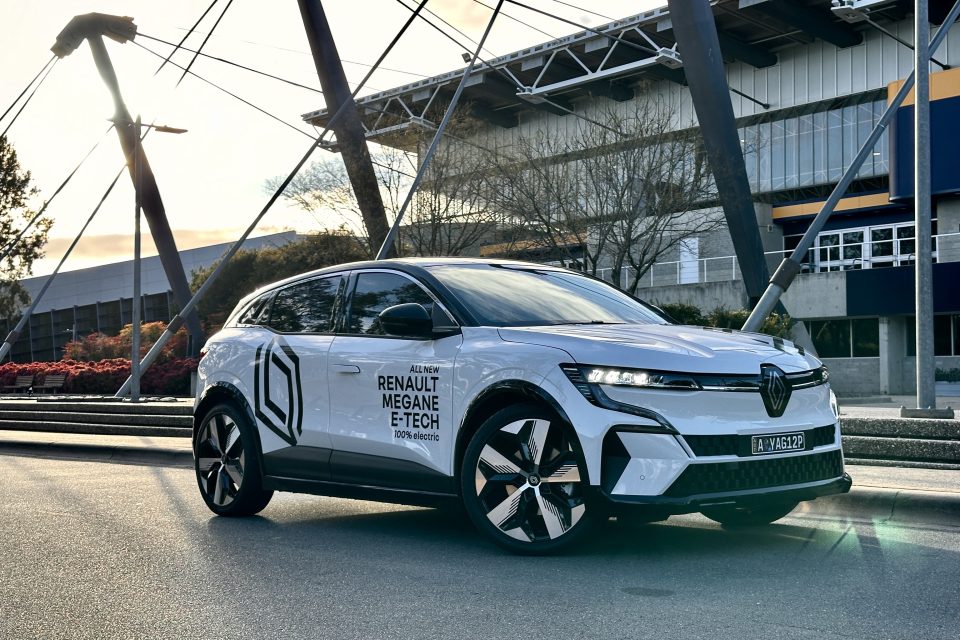
2024 Renault Megane E-Tech
- $54,990 plus on-road costs
- 60 kWh battery and electric motor, 160 kW / 300 Nm
- Front-wheel drive (FWD)
- 0-100 km/h in 7.4 seconds
- 454 km estimated driving range
- 1642 kg kerb weight
- 5-star ANCAP safety rating.
Thanks to National Capital Motors (NCM) for providing this car for testing. Region has no commercial arrangement with NCM.
Original Article published by James Coleman on Riotact.


